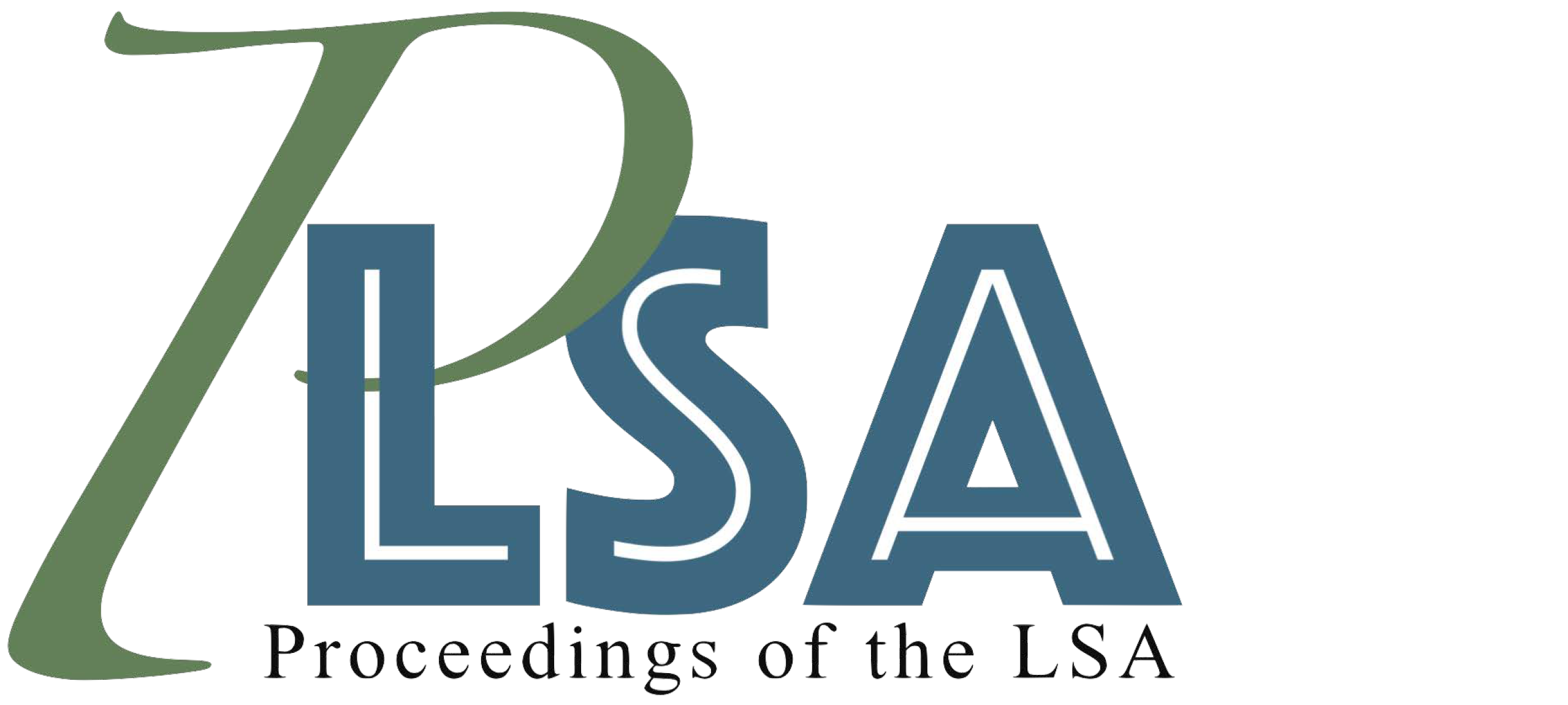The time course of the rate of speaker transitions in conversation
DOI:
https://doi.org/10.3765/plsa.v9i1.5691Keywords:
turn-taking; corpus analysis; gaps; overlapAbstract
Using over 500 hours of recorded conversations from the CallHome and CallFriend corpora (MacWhinney & Wagner 2010), this study analyzes conversations to measure gaps and overlaps in speaker transitions. It builds on previous work in (1) measuring speaker transitions by using custom software that measures single speaker segments based solely on acoustic evidence, without the need for a transcription or manual configuration, and (2) by breaking down the conversations and evaluating the transition rates minute by minute. Across the seven different languages studied, a pattern emerges in the rate of speaker transitions over the course of time. The number of transitions is highest in the first minute and gradually decreases before coming to a more consistent rate. This pattern exists in each of the languages studied, despite language-specific differences in turn-taking behavior. The cross-linguistic consistency of the decrease in the transition rate over the first several minutes of a conversation suggests that accommodation may be occurring as speakers negotiate the cadence of their interchanges with each other.
Downloads
Published
Issue
Section
License
Copyright (c) 2024 David Edwards

This work is licensed under a Creative Commons Attribution 4.0 International License.
Published by the LSA with permission of the author(s) under a CC BY 4.0 license.
